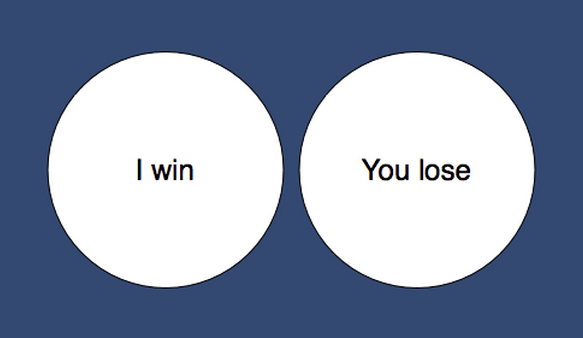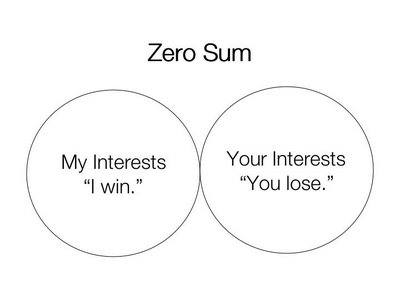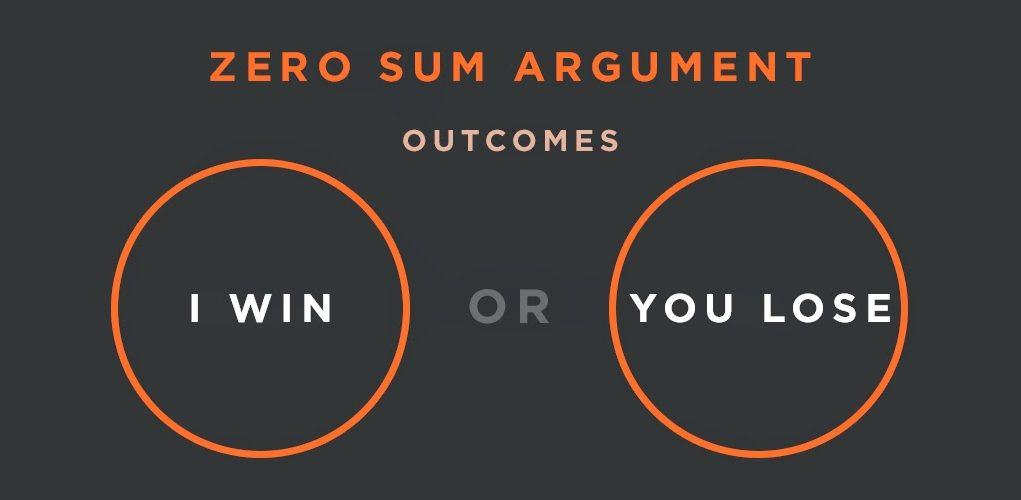
What Does A Zero-Sum Game Mean? An Ultimate Explanation
Mathematicians, economists, and analysts refer to situations in which one party experiences financial gains that result in losses that are equal to those suffered by the other party as zero-sum games in game theory and economic theory.
If one person wins, then everyone else loses an equivalent amount. We’ll give you an overview of the zero-sum game in this article. Please keep reading.
What Is The Zero-Sum Game?
One person’s loss in a transaction is equal to another person’s gain in a zero-sum game. The net impact on both sides is zero after losses and gains.
This is because the model of a zero-sum game assumes that all resources are available at the outset, which means that the supply of resources cannot change due to internal or external factors. Only the initial amount of resources can be redistributed in a zero-sum game.
Game theory is a theoretical framework for analyzing social situations in which individuals are competing. It includes the concept of zero-sum games. The best choices and tactical maneuvers between two or more competing players are the subjects of game theory.
Any number of players can participate in a zero-sum game as long as each time one player gains, the opposing player loses. Demand outweighs supply in this instance, but more resources cannot be made available. Redistributing resources is the only way to satisfy demand.
Example Of The Zero-Sum Game
Games
The operation of a zero-sum game is illustrated by poker games and other gambling activities. The pot establishes the initial sum of money for which everyone is playing at the start of a poker game. Some players make money as the game progresses, while others lose money. The total dollar value of wins and losses together is equal. The starting sum of money remains the same at the end of the game, but it has been distributed to various players in different ways.
There is a clear winner and loser in other games like tennis or chess, which makes them good examples of zero-sum games. This indicates that one player has gained, while the other has lost.
Futures And Options

Zero-sum games can be seen in action with futures and options, two different stock purchase types. The contracts made between the two parties in this situation are based on the idea that one party will win and the other will lose.
This practice demonstrates that investors can end a futures contract with a profit when the price of an underlying asset or commodity increases within a specific time frame, typically against market expectations.
There is always a loss where wealth is transferred from one investor to another when the investors profit from the contract.
Matching Pennies Strategy
Economists and mathematicians frequently explain zero-sum games by matching pennies. Consider two people playing the matching-penny game, where they simultaneously place one penny on the table in front of them.
If the pennies match, or if they are both heads or both tails, the first player wins the round. If the pennies don’t match—that is if one is heading and the other is tails—the second player wins the round.
Zero-sum Games Have Their Roots Somewhere.
The idea of a zero-sum game, which implies that finance and economics are unchangeable and fixed, comes from the notion that a win can only come at the expense of a loss for the opponent.
Modern finance and economics offer a broader perspective on understanding, which suggests that this isn’t always the case. So, it’s possible for there to be gains for both parties that are mutually beneficial.
The Significance Of Zero-Sum Games
Because it is used in so many different fields, including experimental economics, finance, and economics, the idea of a zero-sum game is crucial. They are able to forecast transaction outcomes by using mathematical formulas and equations to apply the zero-sum game to these industries.
To test economic theories and gain practical insight, experimental economics takes into account a variety of factors, including losses, gains, individual behavior, and optimality. Even though there are only two parties involved in a zero-sum game, depending on how big each party is, the outcome might affect millions of people.
Positive-Sum Vs. Zero-Sum Games
Positive-sum games, in contrast to zero-sum games, have gains and losses that are greater than zero. Because there isn’t a clear winner or loser in the majority of trades or transactions, they aren’t zero-sum games. Trades, on the other hand, typically fall under the positive-sum category.
When two parties agree to a trade, they both recognize that, after any transaction or trade costs, the services or goods they are receiving may have more or less value than the ones they are giving. In this case, there is a positive net result, which means that everyone wins and no one loses.

Zero- Vs. Non-Zero Sum Games
Unlike a zero-sum game, a non-zero-sum game has winnings and losses. A non-zero-sum game exists when the total gains and losses experienced by the participating parties are either less than or greater than zero, but never exactly zero.
Since valuable goods and services can be produced or destroyed, many economic situations can be characterized as non-zero-sum because they result in either a net gain or loss of utility for a number of stakeholders.
The total of one party’s gain is not exactly equal to the total of another party’s loss when wealth is created or when additional benefits arise.
All trade is, in fact, by definition a non-zero-sum game because, in order for a transaction to take place, both the buyer and the seller must value the goods or money they are exchanging for one another more than the other.
Every time an economic exchange takes place, both parties must be able to afford the transaction costs. If not, they wouldn’t have engaged in the transaction.
Because they contain both cooperative and competitive components, non-zero-sum games are not strictly competitive; there is no clear winner or loser at the conclusion. A non-zero-sum game involves players who have complementary interests.
A non-zero-sum game allows for both winners and losers, in contrast to zero-sum games, which are strictly competitive and have only one winner and one loser.
If no clear winner can be determined in a zero-sum game, a tie may result. If enough time has passed in an arm-wrestling match without one of the participants being able to defeat the other, either party may decide to declare a draw, as can the referee.
Zero-Sum Games Often Not Black And White
Although many real-life situations may appear to have a clear winner-loser scenario, closer examination reveals that this is not always the case. Real-world gains and losses are difficult to measure.
Imagine you have $2,000 to spare and own a small business. You’re trying to decide whether to put it back into your business or give it to a good cause.
The charity receives nothing if you choose to reinvest it. There is, however, a chance that the charity will eventually profit. That $2,000 reinvestment could generate extraordinary returns, enabling you to donate much more than $2,000 in the future.
If you choose to donate the $2,000 to the charity, it might appear that your business loses out. However, there might be some advantageous advantages to giving money that could support the success of your business. Greater sales may result from an improvement in your company’s standing in the neighborhood.


